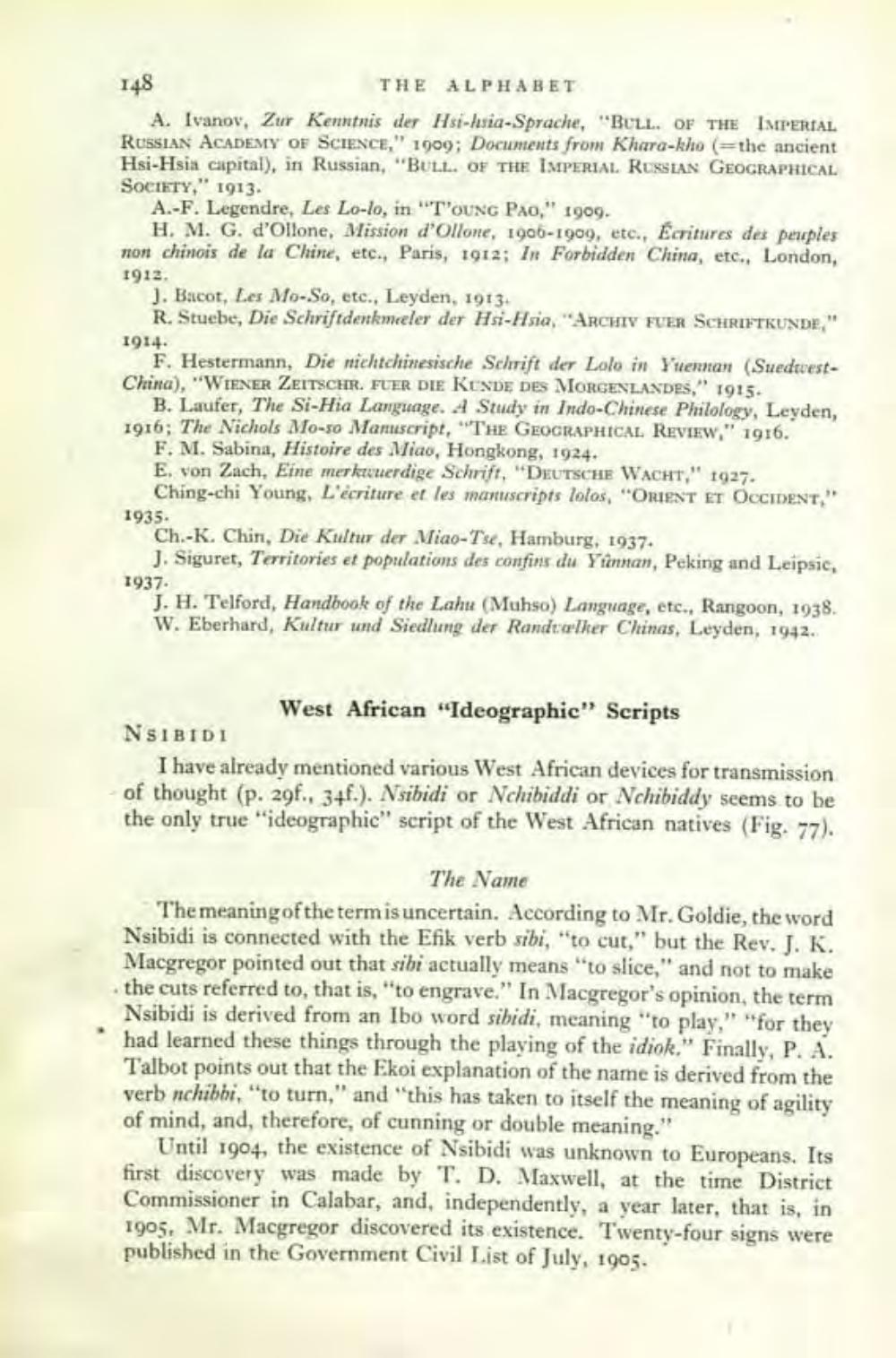________________
148
THE ALPHABET
A. Ivanov, Zur Kenntnis der Hsi-hsia-Sprache, "BULL. OF THE IMPERIAL RUSSIAN ACADEMY OF SCIENCE," 1909; Documents from Khara-kho (the ancient Hsi-Hsia capital), in Russian, "BULL. OF THE IMPERIAL RUSSIAN GEOGRAPHICAL SOCIETY," 1913.
A.-F. Legendre, Les Lo-lo, in "T'OUNG PAO," 1909.
H. M. G. d'Ollone, Mission d'Ollone, 1906-1909, etc., Ecritures des peuples non chinois de la Chine, etc., Paris, 1912; In Forbidden China, etc., London,
1912.
J. Bacot, Les Mo-So, etc., Leyden, 1913.
R. Stuebe, Die Schriftdenkmeler der Hsi-Hsia, "ARCHIV FUER SCHRIFTKUNDE,"
1914.
F. Hestermann, Die nichtchinesische Schrift der Lolo in Yuennan (SuedwestChina), "WIENER ZEITSCHR. FUER DIE KUNDE DES MORGENLANDES," 1915
B. Laufer, The Si-Hia Language. A Study in Indo-Chinese Philology, Leyden, 1916; The Nichols Mo-so Manuscript, "THE GEOGRAPHICAL REVIEW," 1916.
F. M. Sabina, Histoire des Miao, Hongkong, 1924.
E. von Zach, Eine merkwuerdige Schrift, "DEUTSCHE WACHT," 1927. Ching-chi Young, L'écriture et les manuscripts lolos, "ORIENT ET OCCIDENT,"
1935.
Ch.-K. Chin, Die Kultur der Miao-Tse, Hamburg, 1937.
J. Siguret, Territories et populations des confins du Yunnan, Peking and Leipsic,
1937
J. H. Telford, Handbook of the Lahu (Muhso) Language, etc., Rangoon, 1938. W. Eberhard, Kultur und Siedlung der Randwalker Chinas, Leyden, 1942.
West African "Ideographic" Scripts
NSIBIDI
I have already mentioned various West African devices for transmission of thought (p. 29f., 34f.). Nsibidi or Nchibiddi or Nchibiddy seems to be the only true "ideographic" script of the West African natives (Fig. 77).
The Name
The meaning of the term is uncertain. According to Mr. Goldie, the word Nsibidi is connected with the Efik verb sibi, "to cut," but the Rev. J. K. Macgregor pointed out that sibi actually means "to slice," and not to make the cuts referred to, that is, "to engrave." In Macgregor's opinion, the term Nsibidi is derived from an Ibo word sibidi, meaning "to play," "for they had learned these things through the playing of the idiok," Finally, P. A. Talbot points out that the Ekoi explanation of the name is derived from the verb nchibbi, "to turn," and "this has taken to itself the meaning of agility of mind, and, therefore, of cunning or double meaning."
Until 1904, the existence of Nsibidi was unknown to Europeans. Its first discovery was made by T. D. Maxwell, at the time District Commissioner in Calabar, and, independently, a year later, that is, in 1905, Mr. Macgregor discovered its existence. Twenty-four signs were published in the Government Civil List of July, 1905.




